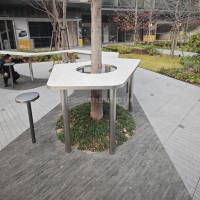Welcome to the website for landscape facilities products and knowledge.
How does the trash can’s design prevent the lid from being damaged by saltwater exposure?
Modern trash cans designed for coastal or marine environments incorporate several key features to prevent lid damage from saltwater exposure. The most critical element is material selection – high-quality plastics like HDPE or corrosion-resistant metals such as 316-grade stainless steel form the foundation of saltwater-proof designs.
Advanced manufacturing techniques create seamless lids without weak points where corrosion could begin. Many models feature protective coatings like powder coating or marine-grade epoxy that create an impermeable barrier against saltwater penetration. The lid's structural design often includes water-shedding angles and drainage channels to prevent saltwater accumulation.
Some innovative designs use floating hinge mechanisms that keep metal components above water level, while others employ plastic-on-plastic contact points to eliminate galvanic corrosion. UV-resistant additives in plastic models prevent degradation from combined sun and salt exposure.
For maximum protection, premium trash cans combine these features with tight-sealing gaskets that prevent saltwater from reaching vulnerable areas. The result is durable waste containment that withstands harsh marine conditions without lid failure or unsightly corrosion. These engineering solutions make modern trash cans reliable for beachfront properties, marinas, and coastal communities where saltwater damage was once unavoidable.
Related search:

Recommendation
An outdoor bar counter with stainless steel and terrazzo materials in an irregular shape